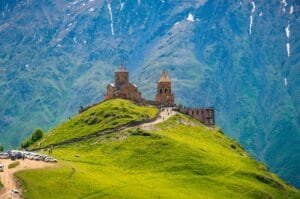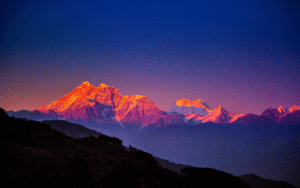


Bhutan Majesty
Overview
- Explore Bhutan’s cultural treasures on a journey through Thimphu, Paro, and Punakha. Discover historic landmarks like Tashichho Dzong, Memorial Chorten, and the cliffside Taktsang Monastery. End in Punakha, visiting its stunning Dzong set amid lush valleys. Experience Bhutan’s unique blend of spirituality, tradition, and breathtaking natural beauty throughout the tour.
Trip Highlights
- Arrival at Thimphu
- Thimphu - Punakha || 80 kms || 1-2 hrs ||
- Explore Gangtey/Punakha Local Sightseeing
- Punakha - Paro || 120 kms || 2-3 hrs ||
- Explore Taktshang Monastery
- Departure from Paro
Itinerary
Upon arrival at Paro Airport, transfer to Thimphu, Bhutan’s capital city. After hotel check-in and refreshment, visit Kuenselphodrang, home to the giant Buddha Dordenma statue overlooking the valley. Explore the National Memorial Chorten and, in the evening, visit Tashichho Dzong, Bhutan’s administrative and monastic center. Overnight stay in Thimphu.
After breakfast, drive to Punakha/Wangdue, stopping at Dochu-La Pass (10,334 ft.) for stunning Himalayan views and the 108 Druk Wangyel Chortens surrounded by prayer flags. On arrival, check into the hotel and visit the historic Punakha Dzong, Bhutan’s former seat of government. Later, hike to Chhimi Lhakhang, the Temple of Fertility. Enjoy a relaxed evening and overnight stay in Punakha/Wangdue.
After breakfast, enjoy a full-day excursion to Gangtey Valley, passing through scenic landscapes, villages, and monuments. Visit the 17th-century Gangtey Goemba and explore the beautiful Phobjikha Valley, winter home of the endangered Black Necked Cranes. Alternatively, spend the day in Punakha Valley, hiking to Khamsum Yuelley Namgyal Chorten for panoramic views, visiting the Punakha Suspension Bridge, and exploring Sangchhen Dorji Lhuendrup Nunnery. Return to the hotel for an overnight stay in Punakha/Wangdue.
After breakfast, drive to Paro, stopping en route at Lamperi to visit the Royal Botanical Park, home to 36 rhododendron species and around 220 bird types. Upon arrival, check into the hotel. In the afternoon, visit Ta Dzong (National Museum) and Rinpung Dzong, Paro’s administrative center. Evening at leisure and overnight in Paro.
After breakfast, hike 2–3 hours to Taktshang Monastery (Tiger’s Nest), built in 1684 around Guru Rinpoche’s meditation cave on a cliffside. Legend says he flew there on a tigress. If time permits, visit the ruins of Drukgyel Dzong and Kichu Lhakhang, one of Bhutan’s oldest and most sacred temples.
After breakfast check out from hotel and drive to Paro Airport for your onward journey with beautiful memories.









